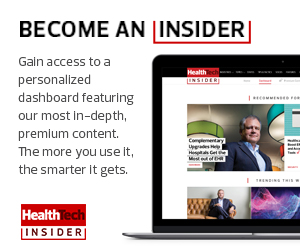HEALTHTECH: Hybrid cloud seems to be on most healthcare organizations’ roadmaps. What makes this such an appealing cloud deployment option?
RODENFELS: Healthcare organizations are constantly looking to improve the patient experience, increase data interoperability and deliver value-based care. In order to achieve this, healthcare organizations need to leverage the power of a flexible and secure infrastructure.
A hybrid cloud model is the most appealing because it enables IT teams to secure patient data and ensure regulatory compliance, and it allows the organization to move at the speed of the cloud, rather than at the speed of their legacy environment. Patients are demanding more digital services. Hospital strategies include adding these services, and the IT roadmap enables the organization to meet patients’ needs.
HEALTHTECH: Based on this report's data, those in healthcare consider hybrid cloud to be the most secure IT operating model, more so than all other industries. Why?
RODENFELS: In healthcare, regulatory requirements, including the HIPAA, mandate the protection of patient health information, reinforcing the importance of data security and patient privacy. Across the board, security is ranked as one of the top factors driving cloud deployment decisions.
Although nearly all industries surveyed in Nutanix’s 2019 ECI said they consider hybrid cloud to be the most secure, the percentage was even higher among healthcare respondents. Healthcare organizations chose hybrid cloud as the most secure option almost 33 percent of the time, compared with about 28 percent from all surveyed respondents.
One reason the healthcare industry considers hybrid cloud to be the most secure IT operating model is because it allows organizations to harden the security parameters based on their organization’s specific compliance policies. The hybrid cloud model also allows them to store their data in the most cost-effective platform. Healthcare organizations need the flexibility to provide the right solution for their clinical applications and IT workloads. One size does not fit all.
MULTICLOUD vs. HYBRID CLOUD: What’s right for your healthcare organization?
HEALTHTECH: Healthcare leads most other industries in multicloud deployments but lags behind in hybrid cloud adoption, despite the industry seeing it as more secure than other models. Why is that?
RODENFELS: Healthcare leads in multicloud deployments because several of their most trusted partners have transitioned application delivery to Software as a Service models and are hosting the infrastructure at the partner’s data center. These include finance, ERP, human resources, supply chain management, service delivery, voice recognition/dictation and learning management platforms. Hospitals negotiate with the providers to manage the risk associated with housing the data and controlling access to the systems.
Healthcare companies consider hybrid cloud to be the most secure, but they fall behind in adoption of this operating model because they have to assume all of the risk for meeting the compliance standards.
The ECI revealed that 55 percent of healthcare respondents cited regulations governing data storage as a top factor influencing future cloud model adoption at their organizations.












